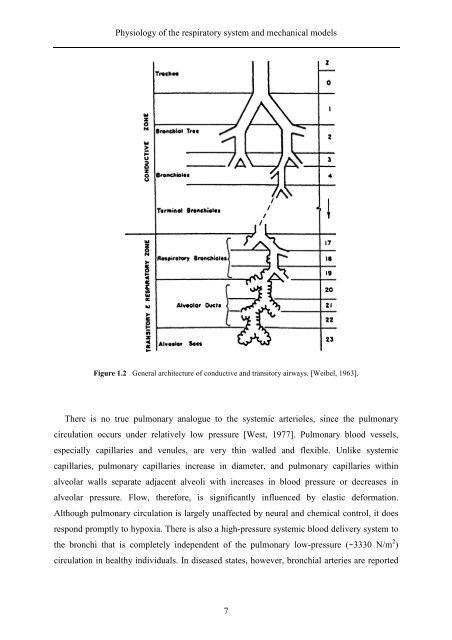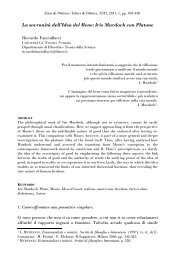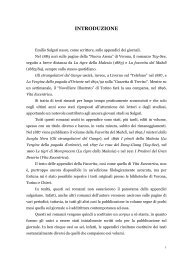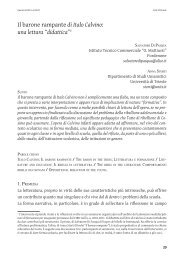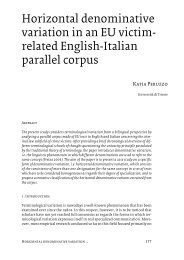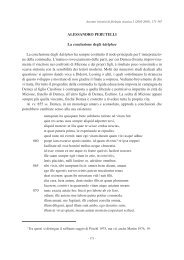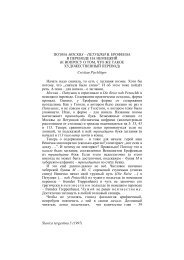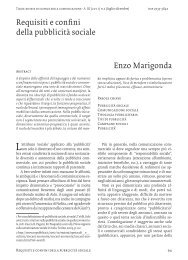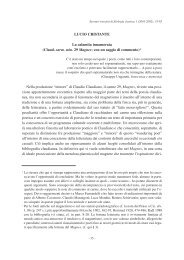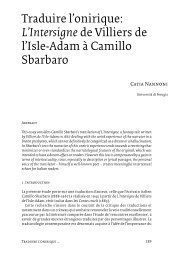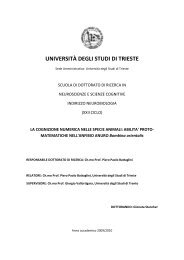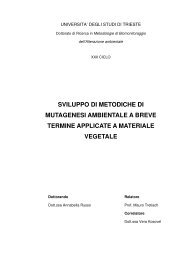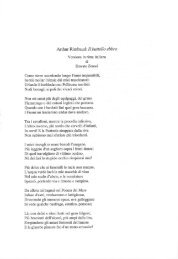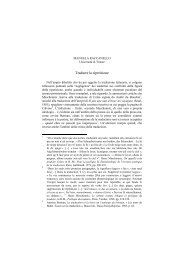UNIVERSITÀ DEGLI STUDI DI TRIESTE - OpenstarTs - Università ...
UNIVERSITÀ DEGLI STUDI DI TRIESTE - OpenstarTs - Università ...
UNIVERSITÀ DEGLI STUDI DI TRIESTE - OpenstarTs - Università ...
You also want an ePaper? Increase the reach of your titles
YUMPU automatically turns print PDFs into web optimized ePapers that Google loves.
Physiology of the respiratory system and mechanical models<br />
Figure 1.2 General architecture of conductive and transitory airways. [Weibel, 1963].<br />
There is no true pulmonary analogue to the systemic arterioles, since the pulmonary<br />
circulation occurs under relatively low pressure [West, 1977]. Pulmonary blood vessels,<br />
especially capillaries and venules, are very thin walled and flexible. Unlike systemic<br />
capillaries, pulmonary capillaries increase in diameter, and pulmonary capillaries within<br />
alveolar walls separate adjacent alveoli with increases in blood pressure or decreases in<br />
alveolar pressure. Flow, therefore, is significantly influenced by elastic deformation.<br />
Although pulmonary circulation is largely unaffected by neural and chemical control, it does<br />
respond promptly to hypoxia. There is also a high-pressure systemic blood delivery system to<br />
the bronchi that is completely independent of the pulmonary low-pressure (~3330 N/m 2 )<br />
circulation in healthy individuals. In diseased states, however, bronchial arteries are reported<br />
7


